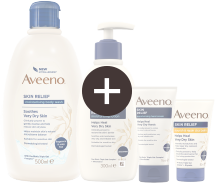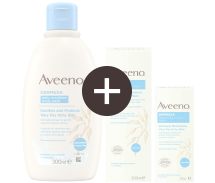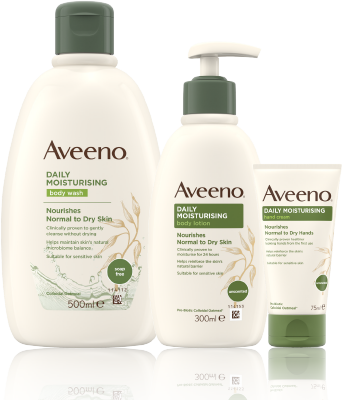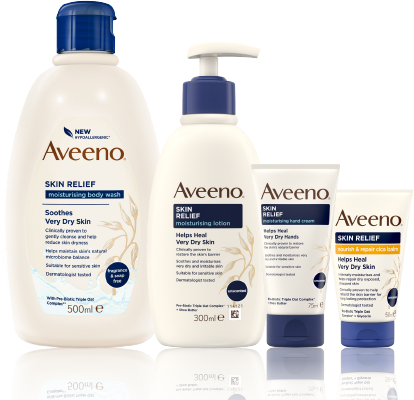USING EMOLLIENTS
Emollients form the basis of the management of dry skin, including eczema; as well as moisturising the skin, they form a protective barrier to prevent moisture loss and keep allergens and irritants out.
Tips for using emollients:4
- Apply emollients generously and regularly, ideally at least three or four times a day5
- Apply in the direction of hair growth
- Applying an emollient after showering or bathing, while water is still trapped in the skin, results in extra hydration
- Using an emollient that contains ceramides helps restore the skin barrier function6
- Use an emollient-based wash product to protect skin while showering or bathing
THE AVEENO® RANGES
AVEENO® offers 3 different ranges to cater for a host of different skin needs.
Click on the images for more information about each range.
DAILY MOISTURISING FOR DRY SKIN
 AVEENO®
AVEENO®SKIN RELIEF FOR VERY DRY SKIN
 AVEENO®
AVEENO®DERMEXA FOR VERY DRY AND ECZEMA-PRONE SKIN

Prebiotic colloidal oatmeal
AVEENO® Daily Moisturising is formulated with oats and/or oat extract and is suitable for use on normal to dry skin

Prebiotic triple oat complex*
AVEENO® Skin Relief with prebiotic triple oat complex helps soothe and moisturise very dry, irritable skin

Prebiotic triple oat complex & ceramides*
AVEENO® Dermexa is formulated with prebiotic triple oat complex and ceramides to help soothe dry, itchy skin and improve the skin's natural microbiome


